Not only is Japan famous for its sashimi, but South Korea also boasts a variety of unique and delicious specialties made from fresh ingredients like meat and seafood.
Korean Dishes That Will Give Diners Goosebumps
Despite the intricate preparation and beautiful presentation, the “live food” dishes in the Land of the Morning Calm still make international diners shudder. However, locals and those accustomed to eating raw food find these specialties very delicious, with unique flavors that cannot be confused with any “gourmet delicacies.”
1. Yuk-hoe
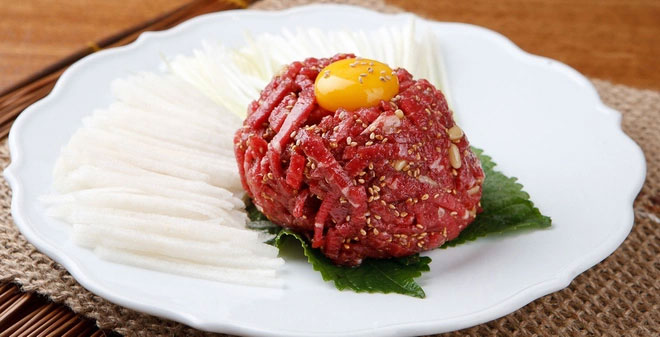
(Photo: Tasteatlas).
Made from various types of raw meat, yuk-hoe is one of the famous dishes of Korean cuisine. This fresh delicacy is primarily prepared using beef, sometimes even horse meat.
To achieve a tender texture and the most impressive flavor, chefs typically choose the tenderloin, slice it thinly, remove the fat, and season it with ingredients like salt, sugar, sesame oil, pepper, and garlic. Diners enjoy the raw meat paired with pear, raw egg yolk, and pine nuts… or mixed into bibimbap.
2. San-nakji
This popular street food in South Korea is favored by locals, but san-nakji (also known as live octopus) can make international diners hesitant due to its “live eating” experience.
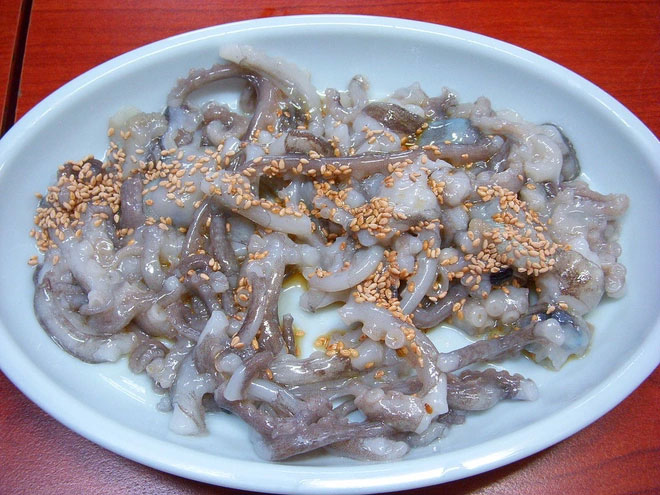
(Photo: Atlasobcura)
However, live octopus is regarded as one of the most dangerous delicacies in the world because the suction cups on its tentacles can cling tightly to the throat, causing choking. To ensure safety and enhance flavor, chefs clean and chop the tentacles before sprinkling sesame oil and roasted sesame seeds on top.
San-nakji is enjoyed fresh, with the tentacles still wriggling, providing diners with a unique experience of “squirming” food in their mouths. Those who are accustomed to it appreciate the sweet, crunchy taste of this fresh ingredient. Nevertheless, diners should chew thoroughly before swallowing to fully savor the dish while ensuring safety.
3. Hwareo-hoe
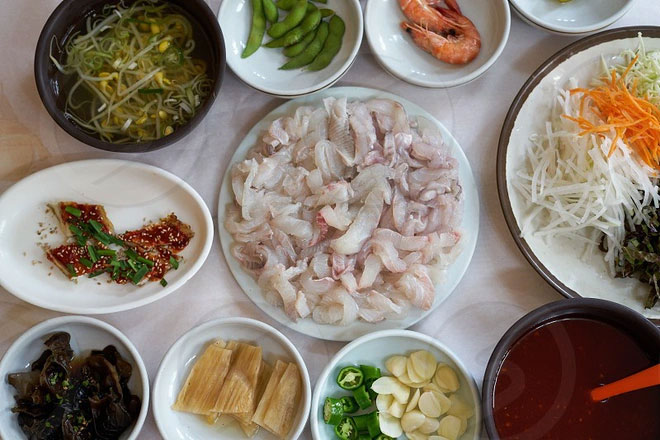
(Photo: Snapwire).
This dish is made from fresh, cleaned fish, filleted, and sliced thinly for immediate consumption. The raw fish is often wrapped in lettuce or perilla leaves and served with dipping sauces made from gochujang, like cho-gochujang (vinegar mixed chili paste) or ssamjang (chili paste mixed with soybean sauce).
4. Gejang
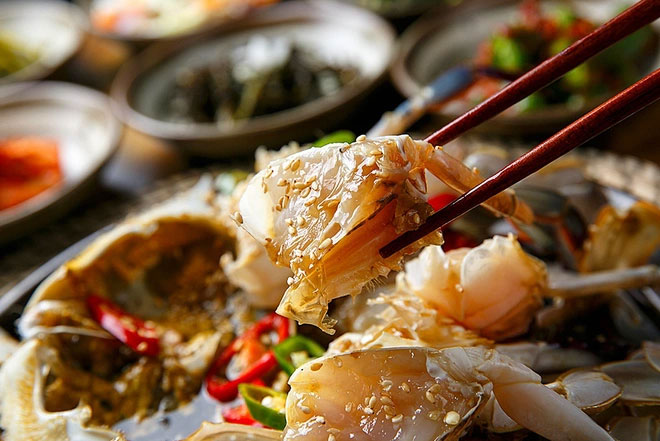
(Photo: Arrivalguides)
This dish features live crabs that are cleaned and soaked in a spicy sauce (called yangnyeom gejang) or soy sauce, with the soy sauce version (known as ganjang gejang) being particularly favored by Koreans.
Although it may not look very appealing, this live crab dish is quite expensive, ranging from 35,000 to 50,000 won per serving (approximately 700,000 to 1,000,000 VND).
5. Mulhoe
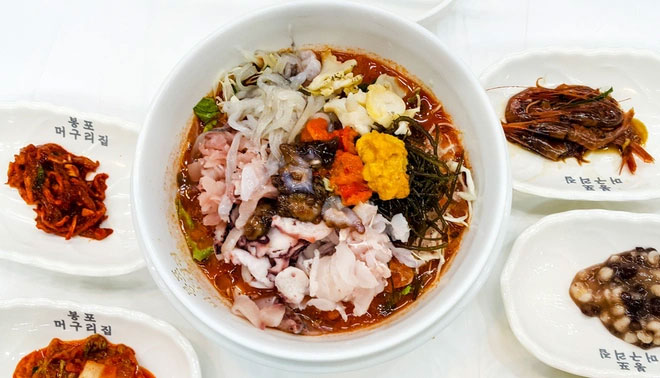
(Photo: Littlegreenfield).
While it may look similar to spicy seafood soup, mulhoe is made from fresh ingredients like squid, octopus, and fish. This dish originates from the southeastern coast of South Korea and was created by local fishermen to utilize available food resources without elaborate preparation.
Each serving of mulhoe includes various types of fresh seafood that are cleaned and chopped, along with vegetables, seaweed, and cabbage, then mixed with a sauce made from chili and soy sauce. Notably, this dish should be eaten cold to fully appreciate its distinctive flavor.




















































